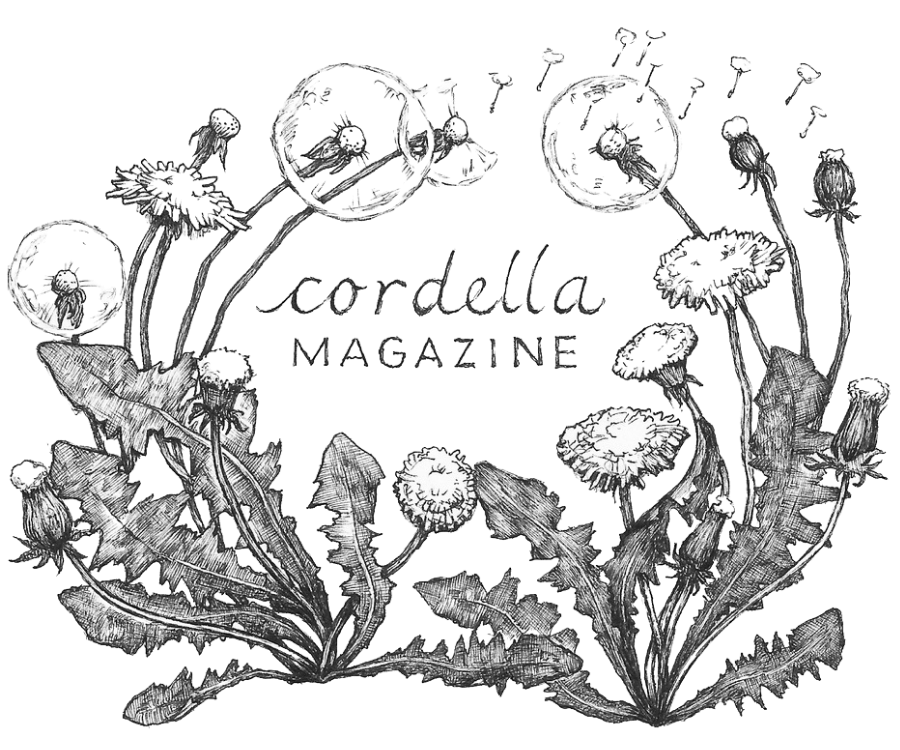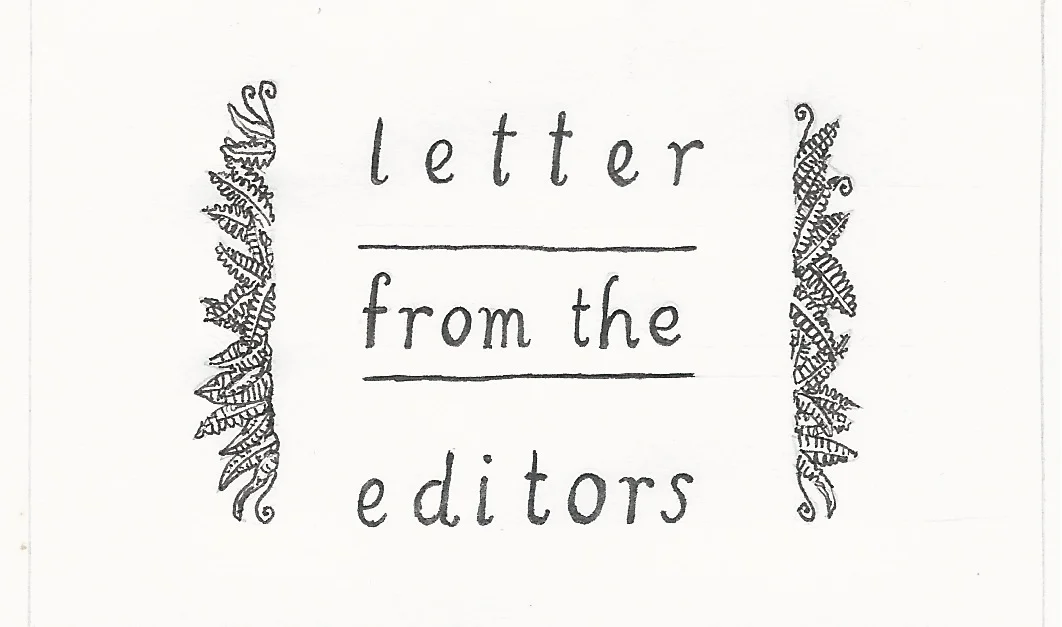Letter from the Editors
artwork by Tessa De Ceuninck
Dear Reader,
As I was preparing to write this letter, I read a poem by Mary Oliver, “Where Does the Temple Begin, Where Does It End?” “There are things you can’t reach,” Oliver writes. “But you can reach out to them, and all day long.” There is joy and satisfaction in reaching for the unreachable, drawing closer to a wild bird or the idea of God but never arriving, knowing you can reach forever. Rebecca Solnit describes this paradox of longing in her essay, “The Blue of Distance”: some beauty can only be appreciated from far away, and never touched.
This issue of Cordella is not about that sort of beauty. It is about touching.
It is about the wisdom, the joy and loveliness of creating texture, of holding hands, wearing clothes, having a body—being a body. The writers, makers, and doers gathered here each explore a sense of spiritual life and connectedness that can only be experienced through physical engagement, through attending to the temporal details that add up to a life.
The concept of “woven” lead us, of course, to the literal hands-on creation of textiles. But as you read the story of artist Kelly Neistat, it is immediately clear that the physical objects she creates are part of a wider web of family ties, cultural patchworks, and new social connections that link women across the globe. E. A. Lepine’s clothing company was born from her relationship with a women’s collective on another continent, and the creative community of In Good Company interweaves lives so seamlessly that the boundaries between care-giver and recipient blur and disappear. In her essay, D.L. Mayfield untangles more ways that clothes are about much more than clothes.
In her own way, each contributor furthers the conversation about our relationship to the elements of our creaturely life, or the horizon between our spiritual and animal selves. We are delighted to feature Cordella’s first recipe, created by food coach and blogger Sherrie Castellano. Her story, along with the poetry of Lindsey Wayland and other elements of this issue, reflects the tension women often experience between their spiritual and physical selves, a fear or ambivalence about food and our bodies.
Learning to embrace the beauty of touching, of being an embodied person, is itself a creative process—we weave together, we pull out seams and untangle knots, we rely on the strands that tie us to each other. Sharing our stories is part of the process, and in that spirit we offer you, dear reader, this collection.
Sarah R. Squire, Essay Editor
Cate Clother, Editor-in-Chief
Tessa De Ceuninck
Tessa De Ceuninck's work is constructed with an almost naïve simplicity, and that is exactly what makes her work so intriguing. She does not need more than a couple of images and some simple cuts (and some occasional black or white ink) to create unique images revealing her strong sense for shape and composition. With clear simple interventions in (seemingly) insignificant images, Tessa tries to document the vastness, the detail, the randomness and the beauty of life.



